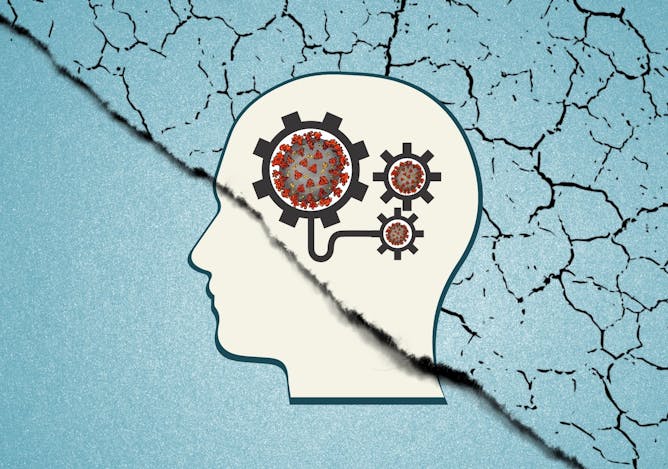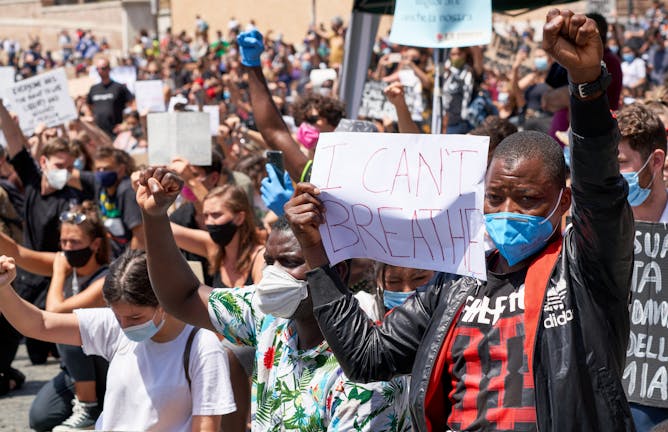|
With Halloween only days away, creepy ghoulish decorations have taken over the neighbourhood. Bony arms stick up from almost dormant gardens and skeletal spiders (an impossibility — spiders have exoskeletons) prowl concrete sidewalks. They’re a reminder that all living things die — but what exactly happens when a bird, or a deer or a rabbit perishes in the woods?
Today in The Conversation Canada, Paul Manning from Dalhousie University writes about many different types of wriggling, scuttling, scurrying insects that play a part in the decomposition of animals — and the rise of new life. Nutrients like carbon, nitrogen and potassium are in short supply in many ecosystems, and the decomposition of a body returns these nutrients to the ecosystem for future use, from fox to fly to beetle to bat.
Also today:
Regards,
|

The process of turning a newly dead animal into a bony skeleton relies on an explosion of life that ushers in the process of decomposition.
(Shutterstock)
Paul Manning, Dalhousie University
Nutrients and energy contained within dead animals are repurposed and repackaged into living, breathing insects.
|

The network of interconnected mental health symptoms associated with COVID-19 is best understood as a multi-faceted syndrome.
(Pixabay/Canva)
Gordon J. G. Asmundson, University of Regina
It’s clear that the pandemic has affected mental health. Researchers have now identified how extensively: Five stress scales with interconnecting symptoms combine to form COVID-19 stress syndrome.
|

Young people don’t pay attention to government communication on COVID-19 because they don’t like being talked at rather than listened to.
Alexis Brown/Unsplash
Jaigris Hodson, Royal Roads University
Communicators must listen to the frustrations, fears and concerns of young people about COVID-19. Then they need to speak to them like human beings, rather than talk at them.
|

In this July 2020 photo, a woman is comforted in her home during a wake for her son who was killed along with at least 26 others in an attack by drug cartels on a drug rehabilitation centre where he was being treated in Irapuato, Mexico.
(AP Photo/Eduardo Verdugo)
Luisa Farah Schwartzman, University of Toronto
The American public should understand that the United States has played a critical role in creating and fuelling violence in Latin America via its unsuccessful war on drugs.
|

Manifestation contre le racisme en souvenir de George Floyd le 7 juin 2020, à Rome, en Italie. Un homme brandit une pancarte disant « I can’t breathe » (Je ne peux pas respirer). Cette phrase est devenu emblématique de la lutte des Noirs contre la violence policière.
shutterstock
Hervé Saint-Louis, Université du Québec à Chicoutimi (UQAC)
Il y a plusieurs moyens de résistance utilisés par la population noire et ses alliés, dont les manifestations, mais le « meme » semble en voie de devenir l’arme la plus efficace.
|
Politics
|
-
Monica Duffy Toft, Tufts University
About 2.9 million eligible American voters live abroad, including members of the military and embassy staffers. Just 5% of them cast their ballots in 2018.
|
|
COVID-19
|
-
Scott C. Ratzan, CUNY Graduate Center; Agnes Binagwaho, University of Global Health Equity; Heidi Larson, London School of Hygiene & Tropical Medicine; Jeffrey Lazarus, Georgia State University; Kenneth Rabin, CUNY Graduate Center; Lawrence O. Gostin, Georgetown University
A safe, effective COVID-19 vaccine is expected to be developed in record time and may be approved for production, distribution and acceptance some time in 2021.
|
|
|
|